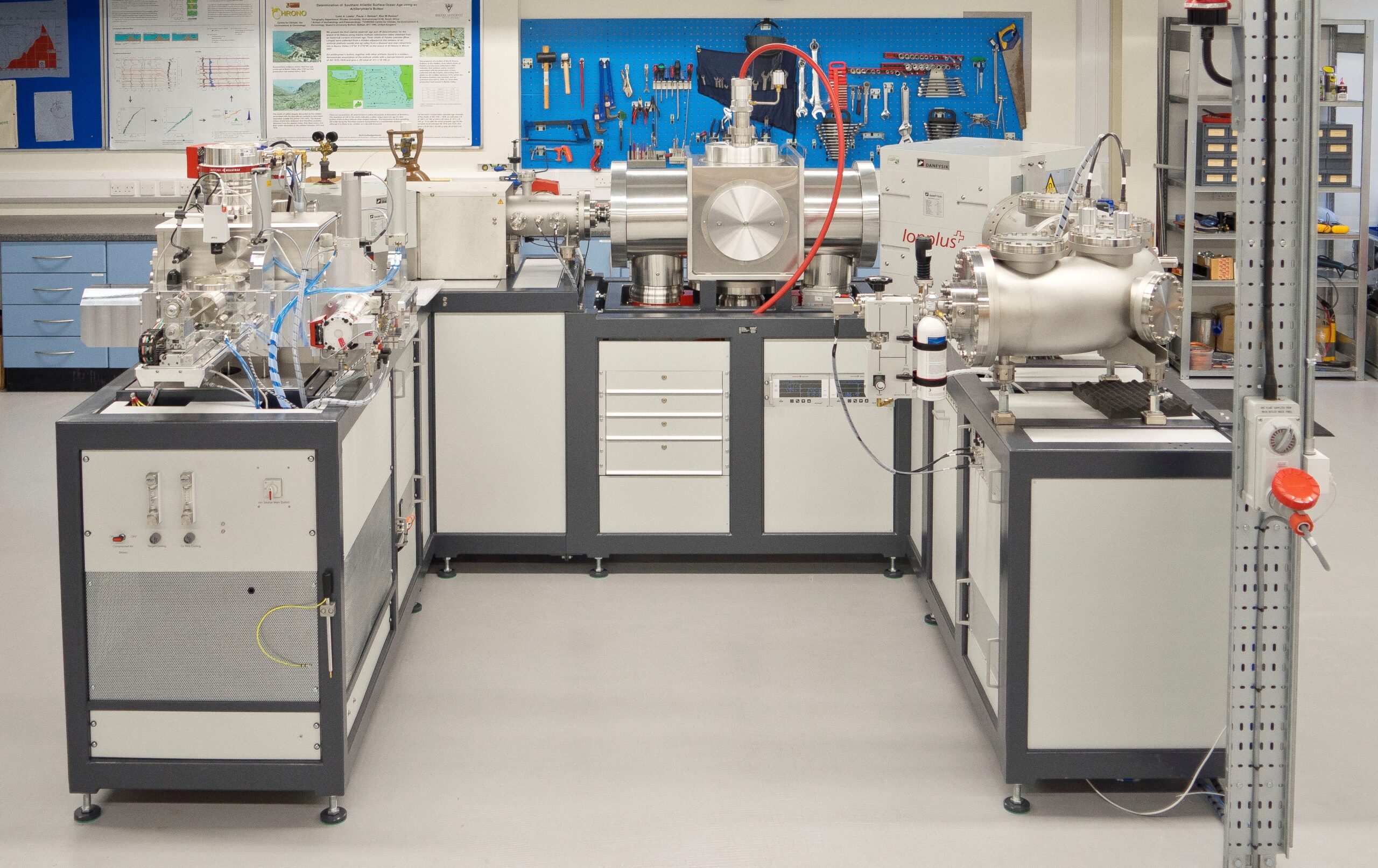History
The 14CHRONO Centre for Climate, the Environment and Chronology is based in the Archaeology and Palaeoecology Building of the School of Natural and Built Environment at Queen’s University, Belfast.
The Centre provides radiocarbon (14C) dates and stable isotope analysis as well as statistical chronological models for both research and commercial projects in a wide range of disciplines including archaeology and environmental sciences.
1966 - 1968
1969
1980s
1990
2001
2004
2006
2009
2010
2019
2021
Radiocarbon laboratory
In 1966 Queen’s University Belfast installed its first radiocarbon laboratory and shortly afterwards, in 1968, appointed Gordon Pearson to lead radiocarbon research and development.

Producing dates
By 1969, the laboratory was producing dates (Smith et al. 1970) and over the next decade was strongly involved, under Pearson, in the development of high precision liquid scintillation counting (Pearson 1979).
During the early years, the Belfast laboratory dated archaeological and environmental materials that proved instrumental in enhancing our understanding of archaeological sites in Ireland and further afield. As well as this, it was at the forefront of radiocarbon calibration research, later becoming a significant contributor to the formation of calibration curves for both northern and southern hemispheres.

Upgrading to the use of benzene lines and liquid scintillation, the laboratory’s throughput increased steadily during the 1980s.

Gerry McCormac becomes Director of the radiocarbon dating laboratory.

Leverhulme Trust grant
In 2001 the laboratory was awarded a Leverhulme Trust grant that enabled the formation of the international radiocarbon calibration (IntCal) working group (Reimer et al 2009).

Established in 2004
The 14CHRONO Centre was established in 2004, with Dr Paula Reimer as Director, to exploit new technology in radiocarbon dating and facilitate the commissioning of an accelerator mass spectrometer (AMS).
The National Electrostatics Corporation 0.5MV compact AMS system was installed in January 2007 in a purpose-built facility in the Archaeology and Palaeoecology Building. Graphitization lines were constructed in-house for converting samples into graphite targets for the AMS and a Thermo Delta V elemental analyzer – isotope ratio mass spectrometer (EA-IRMS) was commissioned in 2008 for measurement of C & N stable isotopes.

The C-horse
The seahorse is the unofficial symbol of Belfast and appears throughout the city on buildings, lamp posts and even rubbish bins. It first appeared on 17th century coinage used by Belfast merchants in the new port of Belfast, possibly because the seahorse was a symbol of good fortune and protection for mariners. The seahorse also appears on the Queen’s University Belfast and Belfast City coats of arms, originally in the form of the Hippocampus sea-horse from ancient mythologies, commonly used in medieval heraldry. The 14CHRONO C-horse is a mixture of both seahorse and sea-horse and was originally designed by Marike Reimer.

Official opening
The 14CHRONO Centre was officially opened in 2009 by the renowned radiocarbon scientist, Professor Minze Stuiver, in a ceremony that coincided with Professor Stuiver receiving an Honorary Doctorate from Queen’s University Belfast.

Laboratory refurb
The pre-treatment laboratory was refurbished in 2010 to provide a clean, well-lit environment that streamlined sample preparation.

Construction of Combustion facility
In 2019 a Ramped Pyrolysis/Combustion facility was constructed in the 14CHRONO Centre, which can analyse a suite of sample types to partition carbon sources and refine chronologies of bulk sediment/soil/peat samples.
Since 14CHRONO was established, we have facilitated the analysis of samples from both the academic and commercial sectors, having reported at least 30,000 radiocarbon dates (around 200 per month) from environmental and archaeological studies, including major collaborative projects, worldwide.

New AMS
In 2021 the 14CHRONO Centre welcomed some major upgrades to its facilities, including the installation of an Ionplus Mini Carbon Dating System (MICADAS). An automated graphitization system (AGE3) was also installed to complement the existing graphitization apparatus.
The upgrades and new equipment enabled an increase in throughput and efficiency, paving the way for further commercial and research collaboration.




 Submit Sample
Submit Sample